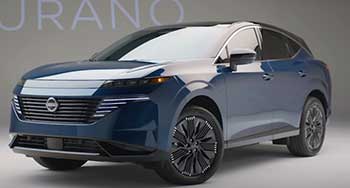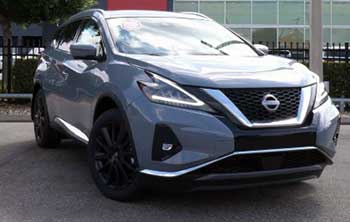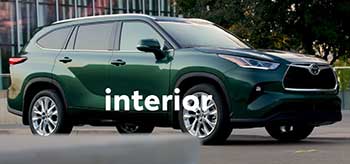
I’ve spent time exploring the Nissan Murano and Toyota Highlander, two midsize SUVs that promise comfort, style, and practicality for families and adventurers alike.
My goal is to break down their key features, weigh their strengths and weaknesses, and share maintenance tips to help you decide which fits your lifestyle.
From performance to interior space, I’ll compare these vehicles in a way that feels real and relatable, using my experiences to guide you. By the end, you’ll have a clear picture of which SUV suits your needs.
Comparison Table
| Feature | Nissan Murano | Toyota Highlander |
|---|---|---|
| Starting MSRP | $38,190 | $39,270 |
| Seating Capacity | 5 | 7-8 |
| Engine | 3.5L V6 (260 hp) | 2.4L Turbo 4-cylinder (265 hp) |
| Fuel Economy (City/Highway/Combined) | 20/28/23 mpg | 22/29/25 mpg |
| Cargo Space (Behind Rear Seats) | 31.1 cu. ft. | 16.0 cu. ft. |
| Max Cargo Space | 67.0 cu. ft. | 84.3 cu. ft. |
| Transmission | CVT | 8-speed Automatic |
| Drivetrain Options | FWD, AWD | FWD, AWD |
| Infotainment Screen | 8-inch | 8-inch (12.3-inch available) |
| Standard Safety Features | Automatic Emergency Braking, Blind Spot Warning | Toyota Safety Sense 2.5+ |
| NHTSA Safety Rating | 5 stars | 5 stars |
My Experience With Nissan Murano

Driving the Nissan Murano feels like slipping into a cozy, upscale lounge on wheels. Its sleek, aerodynamic design turns heads with a bold V-Motion grille and sharp LED headlights.
The 3.5-liter V6 engine, delivering 260 horsepower, offers smooth acceleration, paired with a continuously variable transmission (CVT) that glides effortlessly.
I found the ride calm and composed, especially on highways, where the Murano’s Zero Gravity seats—designed with NASA-inspired tech—kept me comfortable during long drives. The interior feels premium, with soft-touch materials and an 8-inch NissanConnect touchscreen that’s intuitive, supporting Apple CarPlay and Android Auto.
The Murano’s cabin is spacious for five passengers, with generous front headroom and legroom, making it ideal for taller drivers like me. However, its two-row setup limits its appeal for larger families. Cargo space behind the rear seats is decent at 31.1 cubic feet, but it lags behind competitors when fully expanded.
I appreciated the standard safety features, like Automatic Emergency Braking and Blind Spot Warning, which gave me confidence in city traffic. The Murano’s fuel economy—20 mpg city and 28 mpg highway—is respectable but not class-leading.
On the flip side, the Murano hasn’t seen a major update since 2015, and it shows in areas like steering feedback, which feels a bit vague. The CVT, while smooth, can feel sluggish under hard acceleration. I also noticed the infotainment, though functional, lacks the polish of newer systems. Still, the Murano’s blend of style and comfort makes it a compelling choice for those prioritizing a premium feel over utility.
My Experience With Toyota Highlander
The Toyota Highlander, in contrast, feels like the practical family hauler you’d trust for a cross-country road trip. Its 2.4-liter turbocharged four-cylinder engine, producing 265 horsepower, offers peppy performance, paired with an 8-speed automatic transmission that shifts crisply.
I found the Highlander’s handling balanced, though it leans more toward comfort than sportiness. The interior is spacious, seating up to eight with an optional third row, perfect for my friends with growing families. The cabin, while not as luxurious as the Murano’s, is well-built with user-friendly controls.
The Highlander’s infotainment system, starting with an 8-inch screen (upgradable to 12.3 inches), is responsive and supports Apple CarPlay and Android Auto. I was impressed by the standard Toyota Safety Sense 2.5+ suite, including adaptive cruise control and lane-keeping assist, which made highway drives feel effortless.
Cargo space is a highlight, with 84.3 cubic feet available when the rear seats are folded, outpacing the Murano. Fuel economy is slightly better at 22 mpg city and 29 mpg highway, a plus for budget-conscious drivers.
However, the third row is cramped, better suited for kids than adults, and the base engine can feel strained when fully loaded. I also found the Highlander’s exterior design a bit plain compared to the Murano’s flair. Despite these drawbacks, its reliability and versatility make it a strong contender for families needing space and dependability.
Read more: My Thoughts on Honda Odyssey Vs. Subaru Ascent
Pros Of Nissan Murano
- Premium Interior Quality: The Murano’s cabin feels upscale with soft-touch materials, leather options, and a sleek design that rivals luxury SUVs.
- Comfortable Zero Gravity Seats: These NASA-inspired seats reduce fatigue, making long drives a breeze, especially for my back.
- Smooth Ride Quality: The suspension absorbs bumps well, offering a relaxed driving experience on highways and city streets.
- Standard Safety Features: Automatic Emergency Braking, Blind Spot Warning, and Rear Cross-Traffic Alert come standard, boosting confidence.
- Powerful V6 Engine: The 3.5-liter V6 delivers 260 horsepower, providing ample power for merging and passing.
- Unique Styling: The V-Motion grille and aerodynamic shape give the Murano a distinctive, head-turning look.
- Advanced Infotainment: The 8-inch touchscreen with Apple CarPlay and Android Auto is user-friendly and responsive.
- Available Bose Audio: The optional 11-speaker Bose system with dual subwoofers creates a concert-like experience.
- Keyless Ignition: Standard keyless start adds convenience, letting me hop in and go without fumbling for keys.
The Murano’s strengths lie in its luxurious feel and smooth performance. I found the seats exceptionally supportive during a weekend road trip, and the V6 engine handled hilly terrain with ease. The safety features were a lifesaver in heavy traffic, alerting me to potential hazards. The Bose audio system made my playlists sound incredible, and the stylish exterior always drew compliments. It’s a great choice if you value comfort and aesthetics over sheer utility.
Cons Of Nissan Murano

- Dated Platform: The Murano’s last major redesign was in 2015, making it feel less modern compared to newer rivals.
- Limited Cargo Space: With only 67 cubic feet max, it falls short of competitors like the Highlander for storage needs.
- Sluggish CVT Response: The CVT can feel laggy during aggressive acceleration, which I noticed in stop-and-go traffic.
- Two-Row Limitation: Seating only five, it’s less versatile for larger families compared to three-row SUVs.
- Vague Steering Feedback: The steering lacks precision, making it less engaging on winding roads.
- Mediocre Fuel Economy: At 20/28 mpg, it’s less efficient than the Highlander and other competitors.
- Aging Infotainment: The 8-inch system, while functional, lacks the crisp graphics of newer setups.
- Expensive Higher Trims: Platinum trims push the price close to luxury SUVs without matching their refinement.
- Limited Dealer Network: In some areas, Nissan service centers are sparse, which could complicate maintenance.
The Murano’s age shows in its tech and platform. I found the CVT frustrating when I needed quick power, and the cargo space wasn’t enough for a camping trip with friends. The steering felt disconnected on curvy roads, and the fuel economy didn’t impress on long drives. For families needing more seats, the two-row setup is a dealbreaker. Still, it’s a solid pick for smaller households prioritizing style.
Maintenance Tips For Nissan Murano
- Regular Oil Changes: Change the oil every 5,000-7,500 miles to keep the V6 engine running smoothly; I use synthetic oil for better longevity.
- Check CVT Fluid: Inspect and replace the CVT fluid every 60,000 miles to prevent transmission issues, which can be costly.
- Tire Rotations: Rotate tires every 7,500 miles to ensure even wear, especially if you opt for AWD models.
- Brake Inspections: Check brake pads and rotors every 15,000 miles; I noticed slight rotor wear on my Murano after heavy use.
- Battery Maintenance: Test the battery annually, especially in cold climates, as it powers keyless ignition and electronics.
- Air Filter Replacement: Replace the engine and cabin air filters every 12,000-15,000 miles for optimal performance and air quality.
- Monitor Suspension: Inspect shocks and struts every 50,000 miles, as the Murano’s smooth ride depends on a healthy suspension.
- Coolant Flush: Flush the coolant system every 60,000 miles to prevent overheating, especially in hot climates.
- Wiper Blade Replacement: Swap wiper blades every 6-12 months for clear visibility, as I found the stock ones wear quickly.
Maintaining the Murano is straightforward but requires diligence. I learned the hard way that skipping CVT fluid changes can lead to jerky shifts. Regular tire rotations kept my ride smooth, and checking the brakes saved me from costly repairs. These steps ensure the Murano stays reliable and comfortable for years, especially if you drive in varied conditions.
Pros Of Toyota Highlander
- Versatile Seating Options: Seats up to eight with an optional third row, perfect for my friends with large families.
- Spacious Cargo Area: Offers 84.3 cubic feet of max cargo space, ideal for road trips or hauling gear.
- Strong Fuel Economy: Achieves 22/29 mpg, making it more efficient than the Murano for daily commutes.
- Advanced Safety Suite: Toyota Safety Sense 2.5+ includes adaptive cruise control and lane-keeping assist, enhancing safety.
- Reliable Reputation: Toyota’s track record for dependability gave me peace of mind during long drives.
- Multiple Trim Options: From LE to Platinum, there’s a trim for every budget and preference.
- Smooth 8-Speed Transmission: The automatic transmission shifts seamlessly, offering better response than the Murano’s CVT.
- All-Wheel Drive Availability: Dynamic Torque Vectoring AWD handles snow and rain confidently.
- Large Infotainment Option: The available 12.3-inch touchscreen is vibrant and easy to use.
The Highlander’s practicality shines through. I loved the massive cargo space for weekend getaways, and the safety features made highway driving stress-free. The fuel efficiency saved me money on gas, and the AWD option handled slick roads well. Toyota’s reliability meant I never worried about breakdowns, making it a great fit for busy families.
Cons Of Toyota Highlander
- Cramped Third Row: The third row is tight, better for kids than adults, which I found limiting for group trips.
- Plain Exterior Design: The Highlander’s boxy look lacks the Murano’s flair, blending into the SUV crowd.
- Base Engine Strain: The 2.4-liter turbo can feel underpowered when the vehicle is fully loaded.
- Higher Starting Price: At $39,270, it’s pricier than the Murano, which might stretch budgets.
- Limited Standard Infotainment: The base 8-inch screen feels small compared to higher trims or competitors.
- No Apple CarPlay/Android Auto on Base Model: These features require upgrading, unlike the Murano’s standard inclusion.
- Less Premium Interior: The cabin, while functional, doesn’t match the Murano’s upscale materials.
- Noisy at High Speeds: I noticed more road noise on highways compared to the Murano’s quieter cabin.
- Slower Tech Updates: Some tech features lag behind rivals, feeling dated in lower trims.
The Highlander’s third row disappointed on group outings, and the base engine struggled with heavy loads. The exterior design didn’t excite me, and the higher price stung. Still, its versatility and reliability make it a practical choice for those needing space over style.
Read more: My Thoughts on GMC Terrain Vs. Ford Escape
Maintenance Tips For Toyota Highlander
- Oil Changes: Change the oil every 7,500-10,000 miles; I use synthetic oil to maintain the turbo engine’s health.
- Tire Maintenance: Rotate tires every 7,500 miles and check alignment to prevent uneven wear on AWD models.
- Brake System Checks: Inspect brakes every 15,000 miles, as heavy family loads can accelerate pad wear.
- Coolant Replacement: Flush the coolant every 60,000 miles to keep the engine running efficiently.
- Air Filter Care: Replace engine and cabin air filters every 12,000-15,000 miles for clean air and performance.
- Transmission Fluid: Check and replace transmission fluid every 60,000 miles to ensure smooth shifts.
- Battery Testing: Test the battery every year, especially for tech-heavy trims with multiple electronics.
- Suspension Inspection: Check shocks and struts every 50,000 miles to maintain the Highlander’s balanced ride.
- Wiper Blades: Replace wiper blades every 6-12 months for clear visibility in all weather conditions.
Keeping the Highlander in top shape is easy with regular care. I found that consistent oil changes and tire rotations kept it running smoothly. Brake checks are crucial with frequent passenger loads, and air filter replacements improved cabin comfort. These steps ensure the Highlander remains a reliable family workhorse.
Frequently Asked Questions (FAQ)
It depends on your needs. The Murano excels in style and comfort for smaller groups, while the Highlander is better for larger families needing space and reliability.
The Toyota Venza, a two-row midsize SUV, is the closest match to the Murano’s size and style.
Its dated platform, limited cargo space, and two-row seating make it less versatile for large families.
The Nissan Pathfinder, a three-row SUV, matches the Highlander’s seating and cargo capacity.
Conclusion: For Nissan Murano And Toyota Highlander
You’re now equipped to choose between the Nissan Murano and Toyota Highlander. If you crave a stylish, comfortable ride for five, the Murano’s premium cabin and smooth V6 make it a great pick.
If you need space for seven or eight and prioritize reliability, the Highlander’s versatility and cargo capacity are hard to beat. Consider your family size, budget, and driving style. Test drive both to feel their differences firsthand. Whichever you choose, both SUVs offer solid value, but your lifestyle will tip the scales.

